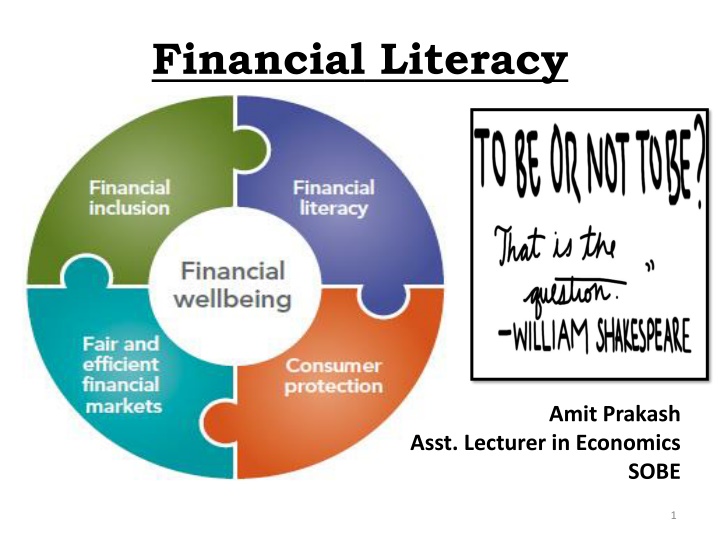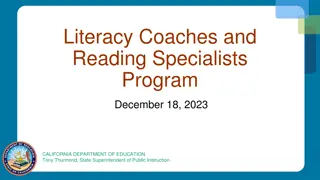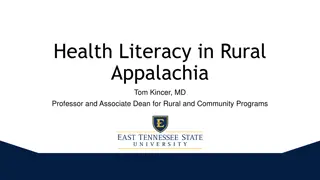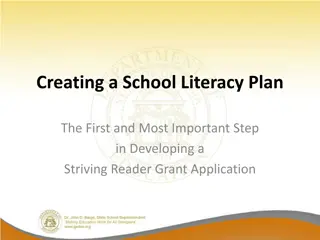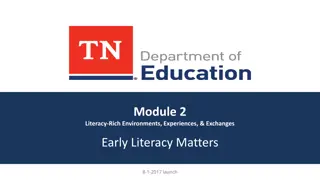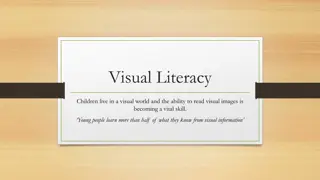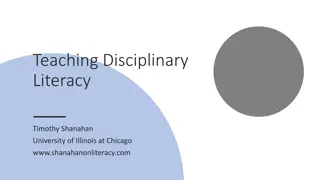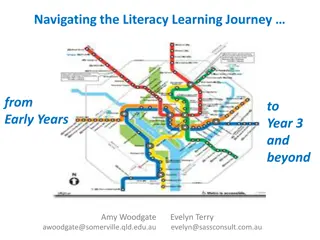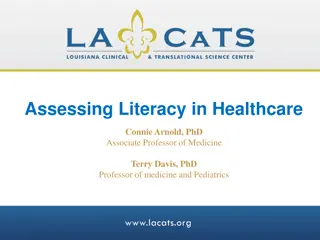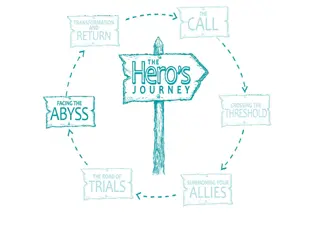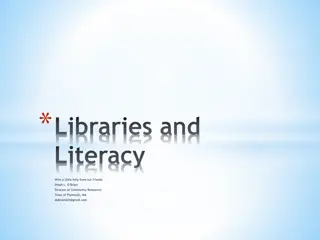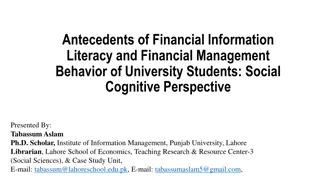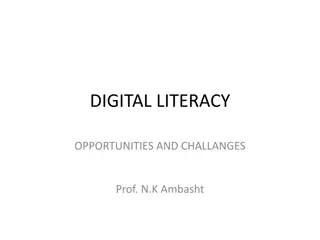Financial Literacy
Financial literacy plays a crucial role in the global economy, impacting consumers' financial decisions and outcomes. This presentation explores the concept of financial literacy, the need for it, real-world data on financial literacy levels, case studies illustrating the consequences of financial ignorance, and countries' responses to promote financial literacy. Learn about the top 10 most financially literate countries and the challenges faced by consumers in different regions.
Download Presentation

Please find below an Image/Link to download the presentation.
The content on the website is provided AS IS for your information and personal use only. It may not be sold, licensed, or shared on other websites without obtaining consent from the author.If you encounter any issues during the download, it is possible that the publisher has removed the file from their server.
You are allowed to download the files provided on this website for personal or commercial use, subject to the condition that they are used lawfully. All files are the property of their respective owners.
The content on the website is provided AS IS for your information and personal use only. It may not be sold, licensed, or shared on other websites without obtaining consent from the author.
E N D
Presentation Transcript
Financial Literacy Amit Prakash Asst. Lecturer in Economics SOBE 1
Presentation Outline Conceptualise financial literacy Need for financial literacy World data on financial literacy Case studies Countries response to need for financial literacy. Conclusion 2
Conceptualise Financial Literacy 3
Need for Financial Literacy Growth in the global economy Complex Financial ignorance carries significant costs 4
Consumers who fail to understand the concept of interest compounding spend more on transaction fees, run up bigger debts, and incur higher interest rates on loans (Lusardi and Tufano, 2015; Lusardi and de Bassa Scheresberg, 2013.) They also end up borrowing more and saving less money (Stango and Zinman, 2009) 5
Top 10 most financially literate countries in the world 1. Norway (71%) 2. Denmark (71%) 3. Sweden (71%) 4. Israel (68%) 5. Canada (68%) 6. UK (67%) 7. Netherlands (66%) 8. Germany (66%) 9. Australia (64%) 10. Finland (63%) 7
CASE STUDIES In Slovakia, the country study found consumers were unregistered consumer credit companies at effective interest rates of 120 and 229 percent per annum when they could have borrowed from banks at 14 percent of less. Worse still, if they missed a single payment or two, they could find their wages garnished and eventually would lose their homes court order or no court order borrowing from 9
In the Czech Republic, trying to prepay a consumer loan could result in a prepayment fee of 100 percent of the original loan amount. In Croatia, the common complaint to the central bank was that, We did not understand what we signed . If they had co- signed a loan, consumers did not realize that they might be obliged to pay the debt of their friend or family member. 10
In Bulgaria, personnel of financial institutions are unable to explain to customers their financial products and if consumers had disputes over entries in credit register, correction of errors was difficult at best. In Romania, borrowersreceived mortgage contracts printed in a 6-point font size that was too small to be read by anyone with less than perfect vision. Trying to obtain a copy of a contract before signing or finding out the amount of fees before sending the money was a test in patience 11
In Russia, over 400,000 investors had paid $1.4 billion to Ponzi schemes for investments that would never be repaid or apartments that would never be built. Over $60 billion a year is paid into stand-alone machines in subways and on the street to pay for utility bills, rent and other amounts under $1,000 12
Countries Response Country Response for Financial Literacy Australia Australian Securities and Investments Commission (ASIC). National Financial Literacy Strategy adopted in 2011. National Consumer and Financial Literacy Framework (2005). It articulates a rationale for consumer and financial education in Australian schools; describes essential consumer and financial capabilities that will support lifelong learning; and provides guidance on how consumer and financial education may be structured to support a progression of learning from Foundation Year 10. 13
Country Response for Financial Literacy Consumer Financial Protection Bureau (CFPB) USA inaugurated in 2011 and is solely dedicated to consumer financial protection. To empower consumers to take control over financial lives Canada Financial Consumer Agency of Canada (FCAC) established in 2001 by the federal government. FCAC role to strengthen oversight of consumer issues, expand consumer education in the financial sector, payment card network operators and their commercial practices and collaborate with stakeholders and coordinate activities that contribute to strengthening Canadians financial literacy. 14
Country Response for Financial Literacy Pacific Island Countries (PICs) PFIP (Pacific Financial Inclusion Programme) is a Pacific-wide programme helping low-income households gain access to quality and affordable financial services and financial education. It is jointly managed by the UN Capital Development Fund (UNCDF) and the United Nations Development Programme (UNDP). PFIP aims to add one million Pacific Islanders to the formal financial sector by 2019 and currently reached 794, 557. 15
Country Response for Financial Literacy Fiji A member of the Alliance for Financial Inclusion's Pacific Island Working Group. National Financial Inclusion Taskforce (Feb 2010) Vuli the Vonu Fiji s Financial Literacy Mascot National Financial Literacy strategy (2013 2015) Financial Education Curriculum Development (FinED) 16
CONCLUSION Financial literacy and financial inclusion are complementary. The world economies are in a race to financially secure their population for the progress of the economy as a whole. The Fijian government in collaboration with other respective partners is providing the platform for financial literacy the onus are on us to became financially literate. For a dollar today is worth much more than a dollar tomorrow Time Value of Money 19
THANK YOU Vuli the Vonu the Financial Literacy Mascot 20
